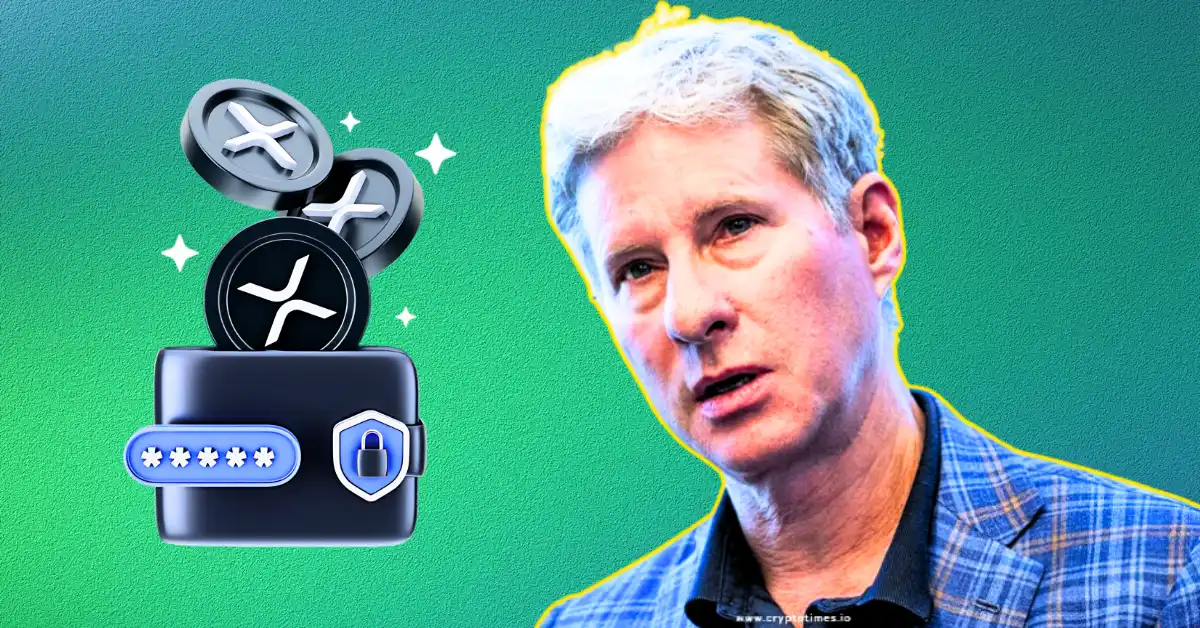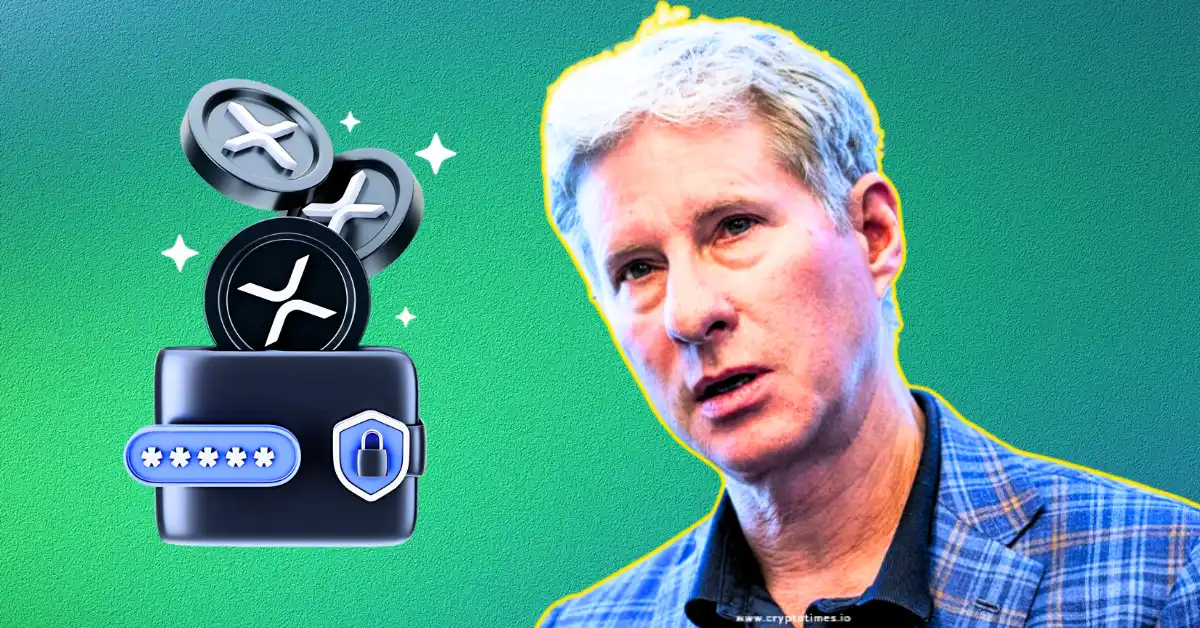XRP: Envisioning a Better Bitcoin
Bitcoin, the first decentralized digital currency, revolutionized the financial landscape by introducing a peer-to-peer transaction system that eliminated the need for intermediaries. However, despite its groundbreaking nature, Bitcoin has several limitations, including slow transaction speeds, high energy consumption, and scalability issues. Recognizing these challenges, Chris Larsen, co-founder of Ripple, envisioned a digital currency that could address these inefficiencies. This vision led to the creation of XRP, a cryptocurrency designed to improve upon Bitcoin’s foundational shortcomings.
The Genesis: Why XRP Was Created
In a recent interview on the “When Shift Happens” podcast, Chris Larsen revealed that the primary motivation behind XRP’s development was to create “a better version of Bitcoin.” Larsen, along with a team of highly skilled professionals, aimed to build a digital currency that could overcome Bitcoin’s critical limitations. These limitations include:
– Transaction Speed: Bitcoin transactions require multiple confirmations from miners, which can result in delays ranging from minutes to hours, especially during network congestion. XRP, on the other hand, was engineered to finalize transactions in seconds, making it suitable for real-world payment scenarios that require near-instantaneous settlements.
– Energy Efficiency: Bitcoin’s Proof-of-Work (PoW) consensus mechanism consumes a significant amount of energy, raising environmental concerns. XRP operates on the XRP Ledger, which uses a consensus protocol that is far less energy-intensive, positioning XRP as a more eco-friendly alternative.
– Scalability and Cost: High transaction fees and slow throughput limit Bitcoin’s scalability, particularly for small-value transfers across borders. Ripple designed XRP to handle thousands of transactions per second with minimal fees, making it an attractive option for financial applications and micropayments.
Technical Innovations That Differentiate XRP
XRP’s technological framework diverges from Bitcoin’s core principles in several ways, highlighting its distinct objectives:
– Consensus Mechanism: Unlike Bitcoin, which relies on miners to validate transactions, XRP uses a decentralized set of trusted validators that reach consensus to confirm transactions quickly and efficiently. This approach avoids the energy-heavy mining race inherent in Bitcoin.
– Supply Model: Bitcoin’s supply is capped at 21 million coins, which are mined over time as incentives for network security. In contrast, XRP has a fixed supply of 100 billion tokens, which were pre-mined and are released strategically to support liquidity and ecosystem growth without dependency on a mining economic model.
– Purpose-Driven Utility: While Bitcoin is often regarded as “digital gold,” primarily serving as a store of value, XRP positions itself as a utility token meant to facilitate fast cross-border payments, liquidity management, and financial interoperability.
Ripple’s Vision for XRP Versus Bitcoin’s Legacy
Chris Larsen emphasizes that XRP was designed not to compete as a store of value but to serve as a better transactional infrastructure. The vision underpinning Ripple and XRP has always been anchored in improving global payments:
– Cross-Border Payments Revolution: By partnering with banks and financial institutions, Ripple promotes XRP as a bridge currency that can reduce costs and delays in international money transfers traditionally dominated by messaging systems like SWIFT.
– Financial Inclusiveness: XRP aims to democratize access to fast, affordable financial services—particularly in regions where banking infrastructure is limited or expensive.
– Sustainability in Crypto: Ripple’s approach tries to sidestep the criticism facing Bitcoin about its environmental footprint, resonating with a growing audience that prioritizes sustainability in digital assets.
The Market and Future Prospects
Beyond technology, Ripple’s co-founder has sparked intrigue with bullish price predictions under specific conditions. Larsen speculated that if Ripple captured as little as 10% of SWIFT’s global payment volume, XRP’s value could soar dramatically—potentially reaching $1,000 per token. While such statements carry optimism contingent upon adoption and regulatory clarity, they underscore the confidence Ripple places in XRP’s practical advantages.
Moreover, XRP’s community has grown robust and passionate, rallying behind the currency’s mission to redefine digital finance. Larsen praises this community as “amazing” and indicative of a broader shift toward efficient decentralized finance (DeFi).
Limitations and Criticisms
Despite its enhancements, XRP is not without controversy:
– Centralization Concerns: Critics argue that XRP’s consensus model and Ripple’s influence raise centralization issues that some purists claim run counter to the decentralized ethos Bitcoin represents.
– Regulatory Challenges: Ripple has faced legal scrutiny, most notably from the SEC, concerning XRP’s classification as a security. These challenges affect adoption trajectories and market confidence.
– Competing Technologies: Emerging blockchain protocols like Ethereum 2.0, Cardano, and others have also addressed scalability and energy efficiency, providing competitive alternatives to both Bitcoin and XRP.
The Final Word: XRP’s Place in the Crypto Ecosystem
The story of XRP exemplifies the innovative spirit driving cryptocurrencies beyond Bitcoin’s original blueprint. Chris Larsen’s portrayal of XRP as “a better Bitcoin” highlights more than technological improvement—it signals a shift in how digital currencies can be tailored for specific use cases, prioritizing speed, sustainability, and financial utility over ideological purity.
XRP encapsulates the evolution of digital money from mere value storage to a versatile tool for global commerce. While Bitcoin will likely remain the flagship cryptocurrency, XRP’s targeted enhancements position it as a critical bridge to broader adoption and utility in a digital economy increasingly dependent on instant, cost-effective cross-border transactions.
In the rapidly changing world of cryptocurrencies, XRP offers a glimpse into a more efficient, inclusive future—one that builds upon Bitcoin’s legacy but advances toward solving the pressing demands of modern finance.
Sponsor
Looking for insights on XRP and its potential? Discover the future of digital assets with Bitbrand Inc. We’re pioneering blockchain-certified luxury digital products, enhancing your Apple devices with exclusive designs from top brands and artists. Explore a new era where technology meets artistry, offering tangible utility and secure ownership in the digital luxury market. Join us in shaping the intersection of innovation and style!












